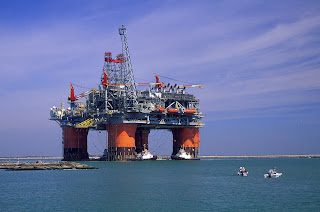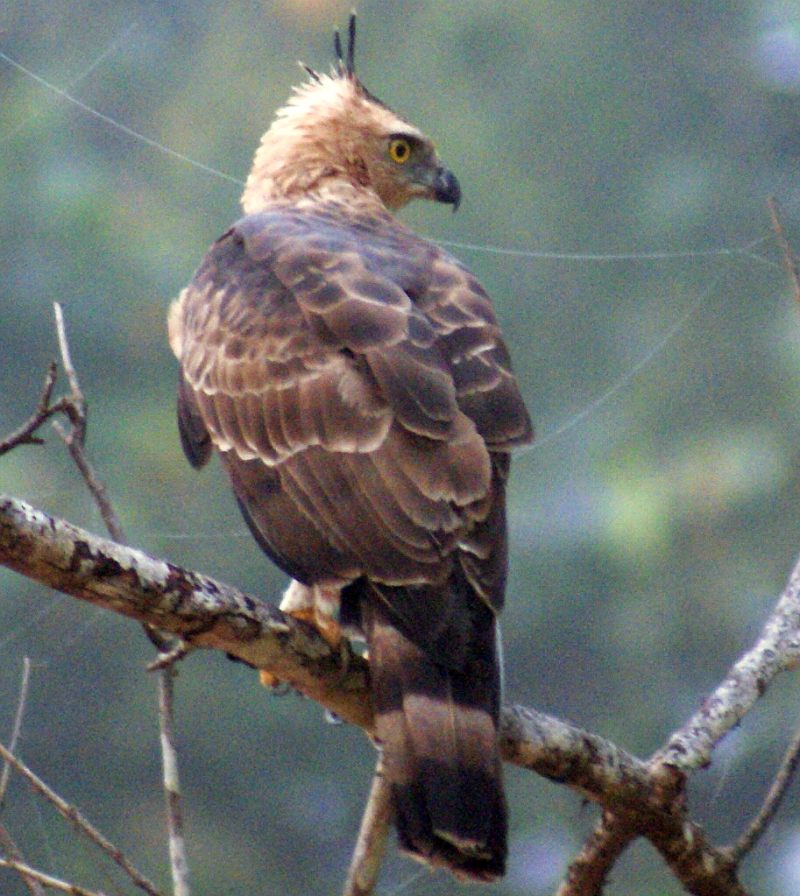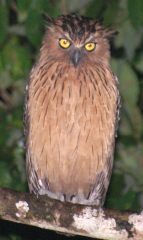The interview of a Dayak man named Kole Adjang from the Setulang village can be found on YouTube. (http://www.youtube.com/watch?v=tpbNo5k6NkI)
He talks about, among other things, the how they are trying to protect their rainforests from the logging industries. He stated that to celebrate everyone in his tribe (Oma'lung tribe) would dance, which has always been a huge part of the traditional culture. Kole works as the head of the Setulang Forest Management Agency.
He goes into how the families in the community are each given 10 land plots to grow rice on, but they only use one plot a year to ensure that the soil will have time to replenish its nourishment. They use a technique in which the vegetation is set on fire to clear the plot and also nurtures the soil. Kole says that it is strictly forbidden to over reach and take new land for farming rice.
Kole speaks about the "forbidden forest" in which is protected by the local Dayak communities. They make sure that no one is logging or damaging the trees within its boundaries. He states that the neighboring villages have allowed their land to be logged by big companies and their land became very unhealthy. He goes on to talk about how those villages have become highly dependent on tourism. which his village strives to negate.
Wednesday, April 30, 2014
Diaspora and Cultural Survival
Dayaks as a population that has been, over the past few years, increasingly been looking towards relocation out of Borneo. Many adolescence move to other Asian countries to go to school or universities. Also many have relocated to find work in Singapore or the peninsula; offshore oil rigs have been a huge factor in Dayak diaspora. Every year the Gawai Dayaks travel home to reunite with their families. The vast migration of this culture has had some drawbacks; as the community become spread out they loss some of their political backing that has been a struggle to get.

(https://blogger.googleusercontent.com/img/b/R29vZ2xl/AVvXsEgaWo8tCrBYXUzBgdrrQWRJ12MkeX2HEONr8UZKn5UFrJR3Wv40tI6dJvx3C0kXUGxCl_qF8VKsDZh6uH2Cx7mcMDHEKD2HLpjBEKWQkKb0ADQz3cLyIT0DJDWEN0aMSimBU46P_HimX8vb/s1600/What+is+the+needed+qualifications+to+work+on+oil+rigs.jpg)
Another recent reason for diaspora is that their has been a outbreak of violence between ethnic and religious groups on account of an economic crisis and political instability. Dayaks and local Malays have rallied together against the ethnic Madurese. Although the Madurese take the main victims, riots in the street have been fired upon by local military, claiming lives.

(http://news.bbc.co.uk/olmedia/1185000/images/_1186401_raised_fists300.jpg)
The Dayaks have been struggling to gain some political antimony for over a decade, but, the so far the move towards this have been mostly unsuccessful. Through the Great Council, the PDKT, and the Dayaks determination they have recently banned together to lobby for collective goals and needs of the Dayaks in Borneo. Through these organization the Dayaks hope to ensure that the population will be able to perverse their identities as a culture.

(https://blogger.googleusercontent.com/img/b/R29vZ2xl/AVvXsEgaWo8tCrBYXUzBgdrrQWRJ12MkeX2HEONr8UZKn5UFrJR3Wv40tI6dJvx3C0kXUGxCl_qF8VKsDZh6uH2Cx7mcMDHEKD2HLpjBEKWQkKb0ADQz3cLyIT0DJDWEN0aMSimBU46P_HimX8vb/s1600/What+is+the+needed+qualifications+to+work+on+oil+rigs.jpg)
Another recent reason for diaspora is that their has been a outbreak of violence between ethnic and religious groups on account of an economic crisis and political instability. Dayaks and local Malays have rallied together against the ethnic Madurese. Although the Madurese take the main victims, riots in the street have been fired upon by local military, claiming lives.

(http://news.bbc.co.uk/olmedia/1185000/images/_1186401_raised_fists300.jpg)
The Dayaks have been struggling to gain some political antimony for over a decade, but, the so far the move towards this have been mostly unsuccessful. Through the Great Council, the PDKT, and the Dayaks determination they have recently banned together to lobby for collective goals and needs of the Dayaks in Borneo. Through these organization the Dayaks hope to ensure that the population will be able to perverse their identities as a culture.
Tuesday, April 29, 2014
Birds of the Dayak
Borneo has a large variety of bird species; there are more then 420 bird species that live on this giant island. The Dayaks believe some birds to be omens and listening to the birds can bring good luck. For example the bird calls and flights are believed to predict whether or not to farm a area or go on a headhunting expedition. One omen that deals with predatory birds is that if you enter the jungle at night and hear the scream of a hawk or an owl; it is a sign that sickness is following you and you must return to the village.




Wallace's hawk eagle (left), Buffy Fish-Owl (right)
Omens that are derived from the cry of birds are always sought before leaving for an expedition, before building new residents, or picking a new spot to farm. The three main bird species that are give the dayaks omen signs: the "Kushah", "Kariak"(below left), and "Katupung" (below right).


(http://www.melbourne2006.com.au/NR/exeres/D5F04F9F-ECEE-41F6-BC72-DDE11D1D7FCE.htm) &
(http://borneobirdrace.wordpress.com/2013/04/23/freshwater-swamp/)


(http://www.melbourne2006.com.au/NR/exeres/D5F04F9F-ECEE-41F6-BC72-DDE11D1D7FCE.htm) &
(http://borneobirdrace.wordpress.com/2013/04/23/freshwater-swamp/)
Wednesday, April 2, 2014
Cosmos
Although there are many differences between tribes, there three basic religious similarities. Most traditional Dayaks are polytheists which means that they believe in many deities that control the world. Dayaks believe that these deities can be coerced into making their lives more pleasant, whether it be from a good harvest to protecting them from other tribes. Like Christianity the Dayaks believe in a creator but they believe that after he created the world his job was done and he now has little to do with the people that inhabit the earth.


Traditional Dayak religion says that the body has two souls; one stayed with the corps until decomposition and the other would stay within the village until the ritual was preformed to send them off on their journey to the land of the dead. The body of the dead would then be burned and the bones would be collected and placed in their ossuary or mausoleum (sandung). This carving is shaped to house the bones and important symbols are inscribes on it; including the hornbill bird (symbolizing the upper world) and a snake/dragon (symbolizing the lower world). At the climax of the ceremony a water buffalo is tied to the sacrificial post (sequnduq) and is speared to death by the relatives of the decease. This is thought to reunite the deceased with his/her spirit. On top of the sacrifice of the water buffalo, pigs too are killed; in earlier times slaves would have replaced the animals. Some of the Dayak cultures believe that the souls are then guided along to the after world by sailing ships that are manned by spirits.
Tuesday, April 1, 2014
Sources
Rigg, Jonathan. Southeast Asia A Region in Transition: A thematic human geography of the ASEAN region. Routledge, 2013
Southeast Asia: A Region in Transition - Jonathan Rigg - Google Books
Geography
MacKinnon, K et al. (1998). The Ecology of Kalimantan. London: Oxford University Press.
Nguyen, T.T.T., and S. S. De Silva (2006). "Freshwater Finfish Biodiversity and Conservation: An Asian Perspective", Biodiversity & Conservation 15(11): 3543-3568)
http://worldwildlife.org
History
Minahan, James. Ethnic Groups of South Asia and the Pacific: An Encyclopedia. Santa Barbara, CA: ABC-CLIO, 2012. Print.
Rigg, Jonathan. Southeast Asia: A Region in Transition. London: Unwin Hyman, 1990. Print.
Cultural World/Society
Discover Borneo, Lonely Planet, 2008.
Cosmos
Bagus Discovery, Kalimantan, http://www.bagus-discovery.com/map/map_dayak_kalimantan02.html accessed 4/2/2014.
Diaspora and Cultural Survival
Rachel Leff, "Violence in Indonesian Borneo Spurs the Relocation of Ethnic Madurese,"
http://www.culturalsurvival.org/ourpublications/csq/article/violence-indonesian-borneo-spurs-relocation-ethnic-madurese (accessed 4/30/2014)
John Teo, "Time for Dayaks to set their sights beyond politics"
http://www.nst.com.my/opinion/columnist/time-for-dayaks-to-set-their-sights-beyond-politics-1.87451 (accessed 4/30/2014)
Further Readings
http://www.ieas.unimas.my/dayak.html
http://www.kborneo.com/read.cfm?THE_ID=905
http://jakhongirshaturaev.wordpress.com/2014/01/02/dayak-people/
Cultural World/Society
Discover Borneo, Lonely Planet, 2008.
Cosmos
Bagus Discovery, Kalimantan, http://www.bagus-discovery.com/map/map_dayak_kalimantan02.html accessed 4/2/2014.
Diaspora and Cultural Survival
Rachel Leff, "Violence in Indonesian Borneo Spurs the Relocation of Ethnic Madurese,"
http://www.culturalsurvival.org/ourpublications/csq/article/violence-indonesian-borneo-spurs-relocation-ethnic-madurese (accessed 4/30/2014)
John Teo, "Time for Dayaks to set their sights beyond politics"
http://www.nst.com.my/opinion/columnist/time-for-dayaks-to-set-their-sights-beyond-politics-1.87451 (accessed 4/30/2014)
Further Readings
http://www.ieas.unimas.my/dayak.html
http://www.kborneo.com/read.cfm?THE_ID=905
http://jakhongirshaturaev.wordpress.com/2014/01/02/dayak-people/
Cultural World/Society
There are basically two main techniques that the Dayaks implement in their surroundings to survive; cultivation and gathering natural resources. Traditionally, Dayaks lived in small communities along the banks of the large river system and mountain ranges; harvesting natural resources such as fish, wild plants, bird nests, herbs, spices, fruits, and wild boar. The Dayaks also cultivate the land to grow rice paddies, palms for the oil, and bananas. They would use a slash and burn technique to open up land for farming and keeping livestock; this technique has recently been on the rise due to the growing demand for commercial farming.
The Dayaks of Kalimantan traditionally lives in communities based in longhouses. Each longhouse is constructed from hundreds of hardwood posts so to elevate the structure from the ground; raising the shelter had multi-fold purpose. Being close to a river system there was the ever present risk of flooding, cattle are able to seek shelter from rain as well as predators underneath, and the elevation promotes a more comfortable living situation where the cool air can circulate. Each longhouse stretches hundreds of meters long and would be lead by its own elders and leaders. The long houses are usually divided into common areas and private living quarters.
Recently, the Dayak people have adapted their living styles to live in individual homes nearby the village center and the longhouses are constructed for modern materials. Also, many have electricity and even parking lots in the front of the building.
Subscribe to:
Comments (Atom)

